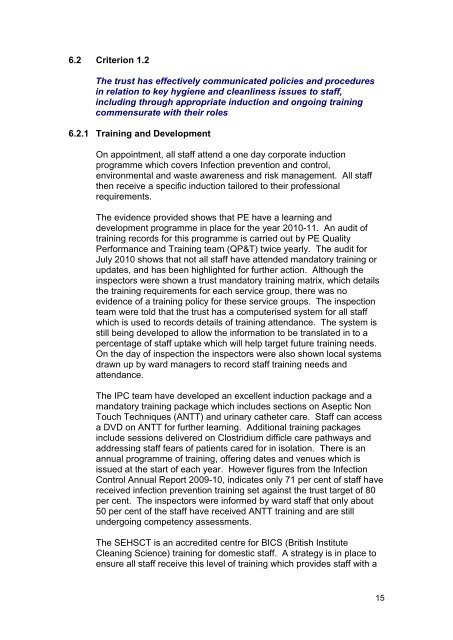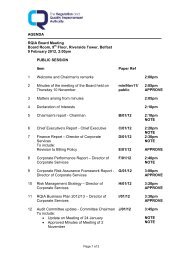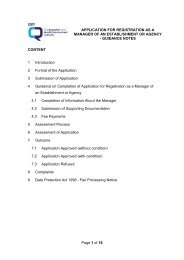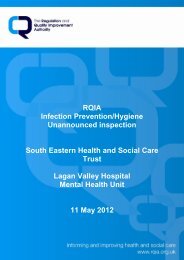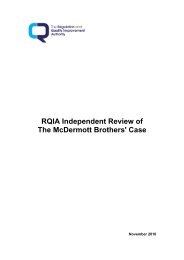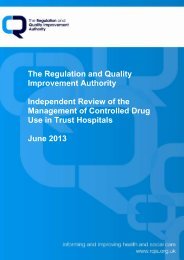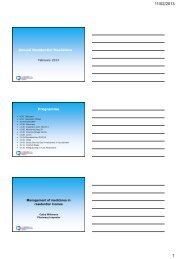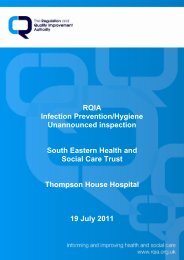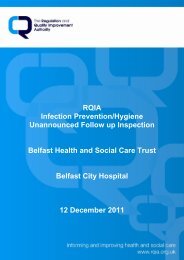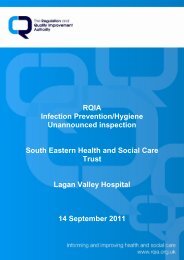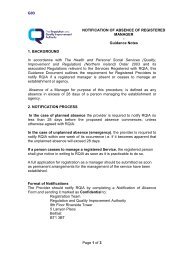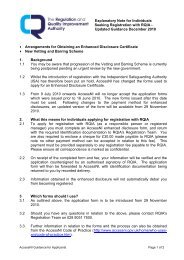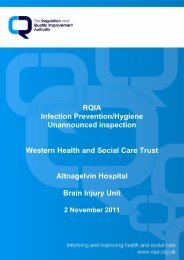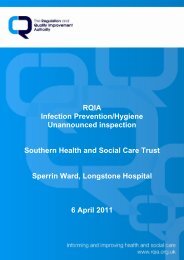Downe Hospital, Downpatrick - 15 February 2011 - Regulation and ...
Downe Hospital, Downpatrick - 15 February 2011 - Regulation and ...
Downe Hospital, Downpatrick - 15 February 2011 - Regulation and ...
You also want an ePaper? Increase the reach of your titles
YUMPU automatically turns print PDFs into web optimized ePapers that Google loves.
6.2 Criterion 1.2<br />
The trust has effectively communicated policies <strong>and</strong> procedures<br />
in relation to key hygiene <strong>and</strong> cleanliness issues to staff,<br />
including through appropriate induction <strong>and</strong> ongoing training<br />
commensurate with their roles<br />
6.2.1 Training <strong>and</strong> Development<br />
On appointment, all staff attend a one day corporate induction<br />
programme which covers Infection prevention <strong>and</strong> control,<br />
environmental <strong>and</strong> waste awareness <strong>and</strong> risk management. All staff<br />
then receive a specific induction tailored to their professional<br />
requirements.<br />
The evidence provided shows that PE have a learning <strong>and</strong><br />
development programme in place for the year 2010-11. An audit of<br />
training records for this programme is carried out by PE Quality<br />
Performance <strong>and</strong> Training team (QP&T) twice yearly. The audit for<br />
July 2010 shows that not all staff have attended m<strong>and</strong>atory training or<br />
updates, <strong>and</strong> has been highlighted for further action. Although the<br />
inspectors were shown a trust m<strong>and</strong>atory training matrix, which details<br />
the training requirements for each service group, there was no<br />
evidence of a training policy for these service groups. The inspection<br />
team were told that the trust has a computerised system for all staff<br />
which is used to records details of training attendance. The system is<br />
still being developed to allow the information to be translated in to a<br />
percentage of staff uptake which will help target future training needs.<br />
On the day of inspection the inspectors were also shown local systems<br />
drawn up by ward managers to record staff training needs <strong>and</strong><br />
attendance.<br />
The IPC team have developed an excellent induction package <strong>and</strong> a<br />
m<strong>and</strong>atory training package which includes sections on Aseptic Non<br />
Touch Techniques (ANTT) <strong>and</strong> urinary catheter care. Staff can access<br />
a DVD on ANTT for further learning. Additional training packages<br />
include sessions delivered on Clostridium difficle care pathways <strong>and</strong><br />
addressing staff fears of patients cared for in isolation. There is an<br />
annual programme of training, offering dates <strong>and</strong> venues which is<br />
issued at the start of each year. However figures from the Infection<br />
Control Annual Report 2009-10, indicates only 71 per cent of staff have<br />
received infection prevention training set against the trust target of 80<br />
per cent. The inspectors were informed by ward staff that only about<br />
50 per cent of the staff have received ANTT training <strong>and</strong> are still<br />
undergoing competency assessments.<br />
The SEHSCT is an accredited centre for BICS (British Institute<br />
Cleaning Science) training for domestic staff. A strategy is in place to<br />
ensure all staff receive this level of training which provides staff with a<br />
<strong>15</strong>


